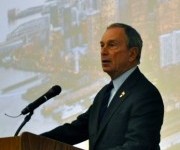In theory, Sidecar is about sharing. Here’s how it’s supposed to work: You’re headed downtown in your car, but before you leave you check your Sidecar app. A user a few blocks down is looking for a ride in the same direction. You swing by, pick her up, and drop her off. Everyone wins by sharing — she gets to her destination, and you get to feel good that the gas you just burned went towards transporting more than one human being. (Plus, Sidecar suggests that she “donate” a little cash to you for your trouble.)
In practice, Sidecar seems to work something like a taxi. There’s no meter, and in beta trials, the suggested donation for longer trips beat actual car services — but it’s not clear that the people giving rides are just average Joes who happen to be going someplace. Instead, this might be their side business. Sidecar screens all the drivers, and the one example of a driver that Wired offers is a laid-off bank employee who uses the service to supplement his income.
Sidecar has to be careful not to say “this is just a different type of taxi service,” though. The company had to get a whole new law passed to make this service work, and it emphasizes that payment is voluntary.
And while it’s nice that they give the drivers background checks, they don’t give them to users — what if the person you pick up is totally creepy? Hopefully Sidecar will also have an Airbnb-style system where drivers can vet passengers, or at least rate them after the fact.
Caveats aside, if this works as planned, it seems like a potentially awesome gas-saving service for places where people constantly need rides on the same well-trodden routes — from a far-out neighborhood to a city’s downtown in the morning, or from a nightlife mecca back home late at night. That is basically what good public transportation’s supposed to do, but more options are always welcome. Even if your mother said never to take rides from strangers.




